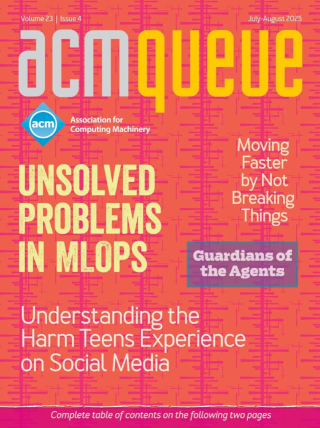
A Conversation with Jim Gray:
Sit down, turn off your cellphone, and prepare to be fascinated.
Clear your schedule, because once you’ve started reading this interview, you won’t be able to put it down until you’ve finished it.
DAFS: A New High-Performance Networked File System:
This emerging file-access protocol dramatically enhances the flow of data over a network, making life easier in the data center.
The Direct Access File System (DAFS) is a remote file-access protocol designed to take advantage of new high-throughput, low-latency network technology.
Storage Systems: Not Just a Bunch of Disks Anymore:
The sheer size and scope of data available today puts tremendous pressure on storage systems to perform in ways never imagined.
The concept of a storage device has changed dramatically from the first magnetic disk drive introduced by the IBM RAMAC in 1956 to today’s server rooms with detached and fully networked storage servers. Storage has expanded in both large and small directions. All use the same underlying technology but they quickly diverge from there. Here we will focus on the larger storage systems that are typically detached from the server hosts. We will introduce the layers of protocols and translations that occur as bits make their way from the magnetic domains on the disk drives and interfaces to your desktop.
You Don’t Know Jack about Disks:
Whatever happened to cylinders and tracks?
Traditionally, the programmer’s working model of disk storage has consisted of a set of uniform cylinders, each with a set of uniform tracks, which in turn hold a fixed number of 512-byte sectors, each with a unique address. The cylinder is made up of concentric circles (or tracks) on each disk platter in a multiplatter drive. Each track is divided up like pie slices into sectors. Because any location in this three-dimensional storage space could be uniquely identified by the cylinder number, head (surface) number, and sector number, this formed the basis for the original programming model for disk drives: cylinder-head-sector access.
Big Storage: Make or Buy?:
We hear it all the time. The cost of disk space is plummeting.
Your local CompUSA is happy to sell you a 200-gigabyte ATA drive for $300, which comes to about $1,500 per terabyte. Go online and save even more - $1,281 for 1 terabyte of drive space (using, say, 7X Maxtor EIDE 153-GB ATA/113 5400-RPM drives). So why would anyone pay $360,000 to XYZ Storage System Corp. for a 16-terabyte system? I mean, what’s so hard about storage? Good question.
The Emergence of iSCSI:
Modern SCSI, as defined by the SCSI-3 Architecture Model, or SAM, really considers the cable and physical interconnections to storage as only one level in a larger hierarchy.
When most IT pros think of SCSI, images of fat cables with many fragile pins come to mind. Certainly, that’s one manifestation. But modern SCSI, as defined by the SCSI-3 Architecture Model, or SAM, really considers the cable and physical interconnections to storage as only one level in a larger hierarchy. By separating the instructions or commands sent to and from devices from the physical layers and their protocols, you arrive at a more generic approach to storage communication



